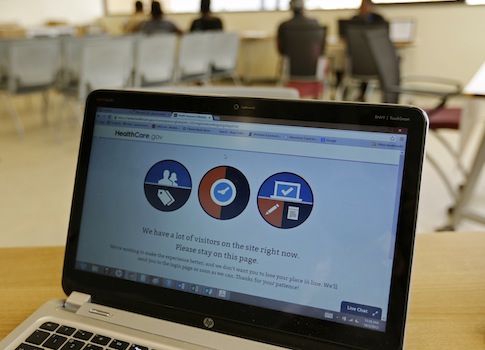Critics of President Obama's health care reform law have long cautioned that it would make it more difficult for people to find primary care doctors. A new report from the Associated Press confirmed that at least some Obamacare consumers are struggling to find doctors.
When Olivia Papa signed up for a new health plan last year, her insurance company assigned her to a primary care doctor. The relatively healthy 61-year-old didn't try to see the doctor until last month, when she and her husband both needed authorization to see separate specialists.
She called the doctor's office several times without luck.
"They told me that they were not on the plan, they were never on the plan and they'd been trying to get their name off the plan all year," said Papa, who recently bought a plan from a different insurance company.
It was no better with the next doctor she was assigned. The Naples, Fla., resident said she left a message to make an appointment, "and they never called back."
The Papas were among the 6.7 million people who gained insurance through the Affordable Care Act last year, flooding a primary care system that is struggling to keep up with demand.
A survey this year by The Physicians Foundation found that 81 percent of doctors describe themselves as either over-extended or at full capacity, and 44 percent said they planned to cut back on the number of patients they see, retire, work part-time or close their practice to new patients.
The wire service said that experts believe most people are still "receiving the care they need, even if they have to drive farther, wait longer, or see a nurse practitioner or physician assistant rather than a doctor," but the inability for people who purchased insurance through the exchanges to obtain a primary care physician is a serious concern.
Insurance agent Anthony Halby heard similar complaints from his clients in Grass Valley, Calif., a Sierra foothill community about an hour east of Sacramento. He said half a dozen consumers wanted him to switch their health plans as soon as the second round of open enrollment started earlier this month. They told him the plan they chose last year made it extremely difficult to find primary care doctors.
Only two insurance companies in the Gold Rush-era town offer coverage through the state exchange, and just four or five primary care doctors out of about 135 signed up with one insurer.
The other insurer has more doctors, but most are considered out of network. That means patients who use them will pay 60 percent of the bill, he said.
"Coverage does not equal access," said Halby, who instead recommends his clients choose a plan outside the exchange that has a much broader provider network but also will not come with the government premium subsidies given to most of those who buy insurance through the exchange. "I tell people this up front: The premiums are going to be higher because there's no subsidy. However, I'm going to guarantee you can keep your doctor."
